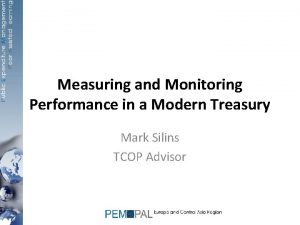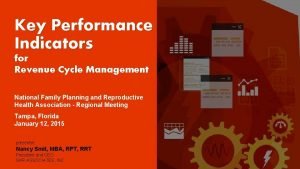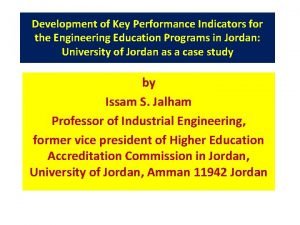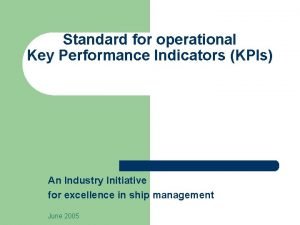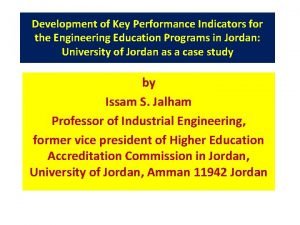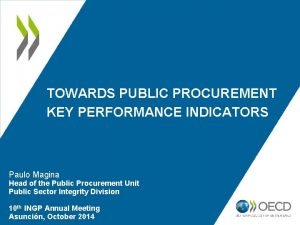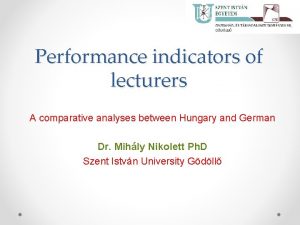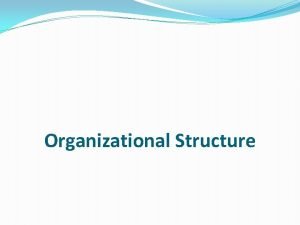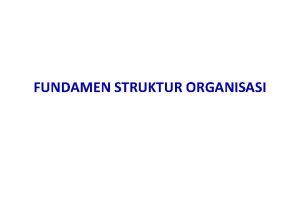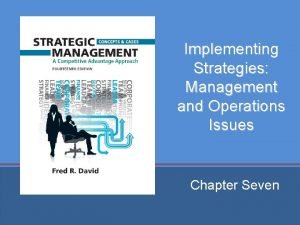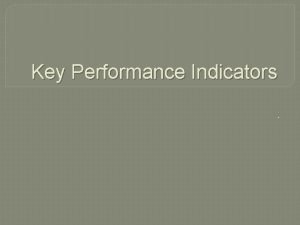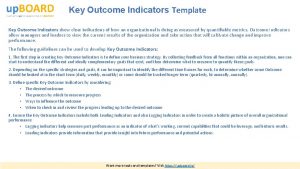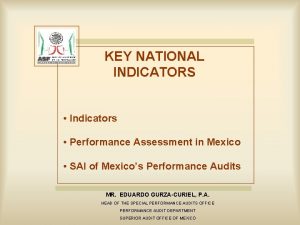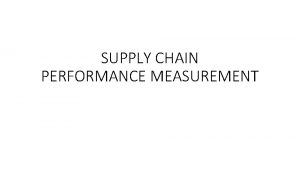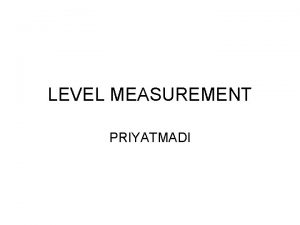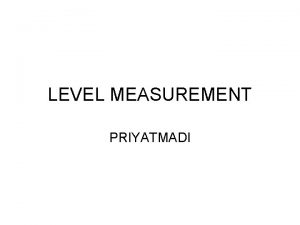Performance measurement at divisional level Key performance indicators

















- Slides: 17

Performance measurement at divisional level

Key performance indicators to measure the operational effeicency

20. 1 Functional and divisionalized organization structures • In a functional structure only the organization as a whole is an investment centre (IC) and below this level a functional structure applies throughout. • A functional structure is where all activities of a similar type are placed under the control of a departmental head. • In a divisionalized structure the organization is divided into separate investment or profit centres (PC ’s) and a functional structure applies below this level. • Diagram on sheet 20. 2 indicates that: 1. In a functional structure all centres below the chief executive or corporate level are cost centres (CC ’s) or revenue centres. 2. In a divisionalized structure divisions tend to be either IC ’s or PC ’s but within each division there are multiple cost and revenue centres. • Divisionalized structures generally lead to a decentralization of the decision-making process whereas managers in a functional structure will tend to have less independence. © 2000 Colin Drury

20. 2 a Fig 20. 1(a) Functional organizational structure © 2000 Colin Drury

20. 2 b Fig 20. 1(b) Divisionalized organizational structure © 2000 Colin Drury

• Decentralisation is a necessary response to the increasing complexity of the environment that organisations face and the increasing size of most organisations. • One danger of decentralisation is that managers may use their decision-making freedom to make decisions that are not in the best interests of the overall company (so called dysfunctional decisions). • More costly decision • Loose the controll

Responsibility structure Manager's area of responsibility Typical financial performance measure Cost centre Decisions over costs Standard costing variances Profit centre* Decisions over costs and revenues Controllable profit Investment centre* Decisions over costs, revenues, and assets Return on investment and residual income

20. 4 a Measuring divisional profits • There are strong arguments for producing two measures of divisional profitability —one to evaluate q Managerial performance q Other to evaluate the economic performance of the division. © 2000 Colin Drury

Evaluating performance of the divisions q ü ü Financial performance indicators Profitability indicators Efficiency indicators Liquidity indicators Market performance indicators q ü ü Non-financial indicators Customer performance indicators Process performance indicators HR/People perfroamnce indicators Sustanbility performance indicators

20. 5 Measuring divisional profitability • Ideally focus should be on relative measures (profitability) rather than absolute measures of profit. • Relative profitability measures: 1. Return on investment (ROI) 2. Residual income (RI) 3. Economic value added (EVA ™) Achivement of the budget is another indicator for assessing the perfromance of divisional manager. © 2000 Colin Drury

Return on investment Profit Investment ROI Division A £ 1 m £ 4 m 25% Division B £ 2 m £ 20 m 10% • Division B earns higher profits but A is more profitable • ROI is a relative measure of performance that can be compared with other investments. It also provides a useful summary measure of the ex post return on capital employed. • A major disadvantage of ROI is that managers may be motivated to make decisions that make the company worse off. © 2000 Colin Drury

Division X Investment project available Rs. 10 million Controlable Profit Rs. 2 million Return on the proposed project 20% ROI of divisions at present 25% Division Y Rs. 10 million Rs. 1. 3 million 13% 9% The overall cost of capital for the company is 15% Which project in the two divisions will maxmize the return to the shareholders? The manager of X would be motivated not to invest and the manager of Y would be motivated to invest. ROI will lead to Dysfunctional decisions (Sub-optimization) © 2000 Colin Drury

Residual income Controllable residual income = Controllable profit of the division less a cost of capital charge on the investment controllable by the manager. • It is claimed that RI is more likely to encourage goal congruence Division X (£m) Division Y (£m) Proposed investment 10 Controllable profit 2 1. 3 Cost of capital charge (15%) ? Residual income ? © 2000 Colin Drury

• The manager of division X is motivated to invest and the manager of division Y is motivated not to invest. • measuring performance by RI would not result in dysfunctional behaviour, i. e. the best decision will be made for the business as a whole. • If RI is used it should be compared with budgeted/target levels which reflect the size of the divisional investment. • Empirical evidence indicates that RI is not widely used. © 2000 Colin Drury

Question 01 Brace Co is split into two divisions, A and B, each with their own cost and revenue streams. Each of the divisions is managed by a divisional manager who has the power to make all investment decisions within the division. The cost of capital for both divisions is 12%. Historically, investment decisions have been made by calculating the return on investment (ROI) of any opportunities and at present, the return on investment of each division is 16%. A new manager who has recently been appointed in division A has argued that using residual income (RI) to make investment decisions would result in ‘better goal congruence’ throughout the company. Each division is currently considering the following separate investments: Project for Division A Project for Division B Capital required for investment $82· 8 million $40· 6 million Sales generated by investment $44· 6 million $21· 8 million Net profit margin 28% 33% The company is seeking to maximise shareholder wealth. Required: Calculate both the return on investment and residual income of the new investment for each of the two divisions. Comment on these results, taking into consideration the manager’s views about residual income.

20. 8 a Economic value added (EVA) • During the 1990 ’s RI was refined and renamed EVA In finance, economic value added (EVA) measures the net value added by a company during a period. It equals net operating profit after tax minus average cost of capital employed. • EVA ™ = NOPAT- (Capital employed*WACC) Economic valued added will lead to market value added. Therefore it is a better indicator for the share holder value maximization. © 2000 Colin Drury

Question 01 Stark Industries' earnings before interest and taxes for the financial year 2011 amounted to $5, 130 million. Applicable tax rate is 35%. 60% of the company's assets are financed by debt which has an after tax cost of 3. 8%, while 40% is financed by equity with a cost of 9. 8%. Stark Industries average total capital employed over the period amounted to $50, 420 million. Find Stark Industries' economic value added.
 Treasury kpi metrics
Treasury kpi metrics Key performance indicator template
Key performance indicator template Revenue cycle management kpis
Revenue cycle management kpis Key performance indicators engineering
Key performance indicators engineering Key performance indicators for capacity building
Key performance indicators for capacity building Key performance indicators for shipping industry
Key performance indicators for shipping industry Kpi for engineering
Kpi for engineering Paulo magina
Paulo magina Results-based performance management system
Results-based performance management system Raquel anido
Raquel anido Geographical division structure
Geographical division structure Samsung company structure
Samsung company structure Bloqueio divisional postero inferior
Bloqueio divisional postero inferior Divisional org structure
Divisional org structure Multidomestic strategy pros and cons
Multidomestic strategy pros and cons Functional structure organization
Functional structure organization Sbu organizational structure
Sbu organizational structure Divisional budget
Divisional budget
